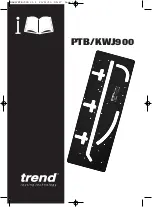
SENSOR SYSTEM Ro 35 L
2.2 Mode of operation
DESCRIPTION
2-2
6.461.21 - 2008/06
2.2 Mode of operation
The sensor system operates on the basis of the eddy current principle in
accordance with EN 12084. Rotating systems are used to detect longitu-
dinal surface defects. Probes rotate at high speed and without physical
contact around the test piece. By feeding the material the probes scan
the surface in helical paths.
Due to the locally high resolution of the probes and the transverse move-
ment across the crack by each revolution, this is the most sensitive
method for detecting longitudinal defects.
Any time a probe crosses a crack, it generates a signal. Thus, the rotating
system generates a high number of consecutive signals that reliably indi-
cate a flaw of a certain length.
The test speed is a result of the number of rotating probes, integrated in
the rotating head (2 or 4 test levers), the track width of all probes, and the
rotational speed (rpm). The helical path of all probes must be side by side
to guarantee a fully gapless scan.
The signals recorded by the probes are transferred from the sensor sys-
tem to the test electronics for evaluation.
The primary power supply and the secondary signal of the probes are
transmitted by rotating inductive transmitters without physical contact.
Two types of motor controls are available:
MOC E (economy version) with one constant rotational speed at
4500 rpm and manual brake system.
MOC SB with two switchable speeds 4,500 and 9,000 rpm and electrical
brake system.
Signal generation during
rotary testing
Test tracks and flaw signals
of a rotating probe
Test tracks of two rotating
probes offset by 180º
Test tracks of four rotating
probes offset by 90º















































